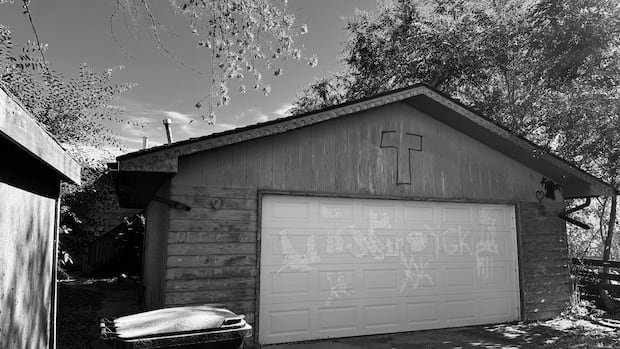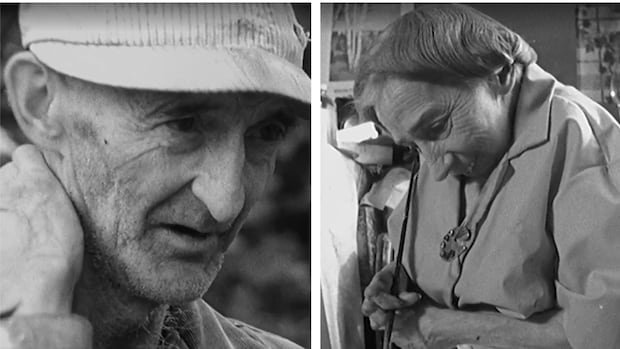WARNING: This story contains graphic details about how a person was killed.
It took only three days for the joint first-degree murder trial of Cheyann Peeteetuce and Summer-Sky Henry in Saskatoon to implode.
On Jan. 8, 2025, the third day of the judge-alone trial at Court of King’s Bench that was scheduled to run eight weeks, Justice Richard Danyliuk spoke to the family of murder victim Megan Gallagher.
“Truth grows best when exposed to sunlight,” he said.
“However, there are sometimes matters involving what I’ll call, inelegantly, state or other secrets. Things that need to remain confidential.”
With that, Danyliuk sent the family, media and public from the courtroom.
In the following days, Crown prosecutors Carla Dewar and Tyla Olenchuk were removed from the case without explanation. Within a week, court reopened with Justice Mona Dovell replacing Danyliuk on the bench.
Dovell ultimately accepted manslaughter pleas from Peeteetuce, 31, and Henry, 26.
Instead of a potential life sentence with no chance of parole for 25 years, the Crown and defence jointly submitted seven-year manslaughter sentences for each woman. After credit for time in custody, the time left to serve worked out to about six years for Peeteetuce and five years, four months for Henry.
“To hear it, you hear the word ‘manslaughter’ — it hit me in the gut, real hard,” said Gallagher’s father Brian, outside court.
“I was sick to my stomach. I’ve got a strong stomach, but this one really got to me.”
LISTEN| New CBC podcast series explores the life and murder of Megan Gallagher :
What happened to turn an eight-week first-degree murder trial into pleas to a lesser charge after less than a week?
Extensive publication bans because of then-upcoming trials prevented reporting on what happened back in January. With the manslaughter trial of Roderick Sutherland now complete, though, those bans are no longer in effect and the behind-the-scenes story can be told.
The answer to how Peeteetuce and Henry got their deals traces back to the early days of the police investigation into Megan Gallagher’s disappearance, and the critical role a confidential informant (CI) played in their trial.
The garage
Even with the publication bans, a basic narrative emerged through police news releases and earlier trials around what happened to Megan Gallagher.
The 30-year-old parent of a young daughter went missing in Saskatoon in the fall of 2020. Her last contact with her family was on Sept. 18 and police said she was last seen leaving a friend’s house on Sept. 19.
Gallagher was sighted on surveillance video at a Saskatoon convenience store on Sept. 20. Her bank card was used at a McDonald’s on 22nd Street that same day by two men, one who was later identified as Robert (Bobby) Thomas..
She was reported missing by her family on Sept. 30.
On Jan. 22, 2021, police said in a news release they were investigating her disappearance as a homicide. In May, they released audio from a call made to a taxi company on her phone days after her disappearance.
Her remains were found on the bank of the South Saskatchewan River, about 105 kilometres northeast of Saskatoon near the village of St. Louis, on Sept. 29, 2022.
Nine people were eventually charged in connection with her disappearance and death. Police and the Crown believed she had been confined, tortured and killed in a garage at 709 Weldon Ave.
Thomas was the first person charged with murder, on Sept. 20, 2022. He pleaded guilty in October 2024 to second-degree murder and was sentenced to life in prison with no chance of parole for 18 years. It stands as the only murder plea of the nine accused.
Ernest Vernon Whitehead, Jessica Badger (Sutherland) and John Wayne Sanderson pleaded guilty to offering an indignity to human remains. This is how the court describes being involved with taking her body from the garage and dumping it in the river.
Charges against Robin John (unlawful confinement and aggravated assault) and Thomas Sutherland (manslaughter) were stayed.
As described above, Peeteetuce and Henry, both charged with first-degree murder, pleaded guilty to manslaughter in January 2025 and were sentenced to seven years each.
Roderick Sutherland was charged with first-degree murder, but in August 2025 the charge was downgraded to manslaughter. On Friday, a 12-person jury at Court of King’s Bench in Saskatoon found Sutherland guilty on charges of manslaughter, unlawful confinement and offering an indignity to human remains.
He was taken into custody following the verdict and returns to court on Dec. 19 for sentencing arguments.
The Bobby Thomas connection
An agreed statement of facts from the Peeteetuce and Henry trial shows that the roots of Megan Gallagher’s confinement and murder on Sept. 20, 2020, can be traced back to another kidnapping and torture that happened a month earlier.
Police were called to a house at 427 Ave. G South on Aug. 21, 2020, for a report of a man being held against his will and getting assaulted. Three women and two men were eventually arrested and charged.
The confined man was Terror Squad member Robert (Bobby) Thomas.
Thomas was held hostage for four days and tortured, burned and stabbed more than 18 times in the Avenue G house, but he eventually escaped his captors — running down the street, wounded and tied to a chair.
The initials “IP,” for the rival gang Indian Posse, had been carved into his body.
A month later, Megan came to the house on Weldon Avenue and encountered Thomas. Peeteetuce had reached out to Megan and asked her to buy and bring drugs to the house.
“When Megan came to the garage, [Thomas] believed she had information about who had assaulted him. He suspected a rival gang had been involved,” the statement said.
The statement of facts said that Megan was tied to a chair in the garage and repeatedly assaulted and questioned about what she knew about the confinement of Thomas. These assaults ended with her murder, which Thomas described in graphic detail at Roderick Sutherland’s manslaughter trial.
Thomas testified he instructed Henry to wrap Gallagher’s lower body in plastic wrap “but she wrapped her face.”
“I was on the other side [of a makeshift wall] talking to Cheyann. I checked after. Megan was gone.”
Given the state of her remains after their discovery in the river, the autopsy found “no anatomical cause of her death.”
Witness or confidential informant?
The issues that derailed the Peeteetuce and Henry trial actually surfaced in the fall of 2024.
The week of Oct. 21 had been set aside for Justice Danyliuk and the lawyers to go through a package of pre-trial motions relating to wiretaps and search warrant informations. A week before those scheduled meetings, however, Danyliuk learned that Peeteetuce’s lawyer, Chris Murphy, had only just received disclosure material he had requested from the Crown two years earlier.
This left Murphy with not enough time to prepare his motions. This forced Danyliuk to cancel those pre-trial hearings. Instead of the issues getting resolved months before the trial, they would instead be dealt with in its first week, in January 2025.
An exasperated Danyliuk spoke in court on Jan. 6, the first day of the trial, about Murphy having to wait almost two years to get photocopies of police affidavits.
“Why? I really don’t know,” Danyliuk said.
“I’ve never had an explanation. And frankly, that timing is ridiculous — 22 months. Inexplicable? Yes. Inexcusable? Certainly.”
In an interview with CBC, Murphy said he had been trying ever since Peeteetuce’s arrest to get disclosure from the Crown. By law, prosecutors must give the accused and their lawyer all the relevant evidence, including both evidence that suggests guilt and evidence that suggests innocence.
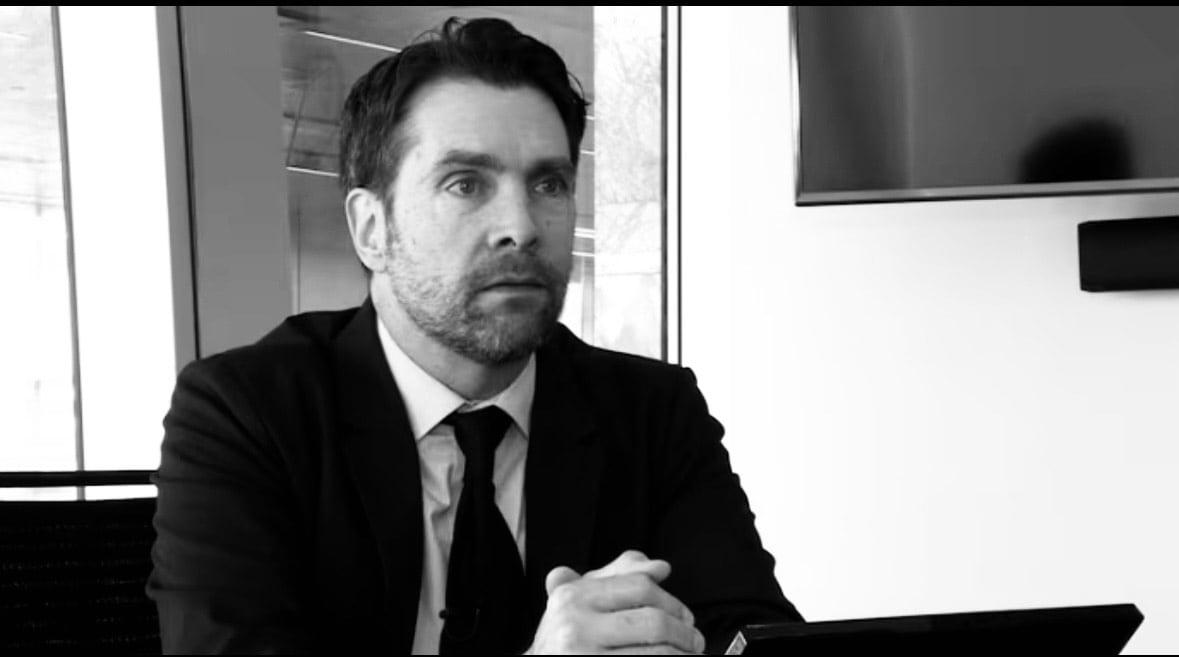
Murphy had asked for the information that police used to get their search warrants for the house on Weldon Avenue. These documents are approved by a judge and called “informations to obtain,” or ITOs.
Murphy said that on Dec. 3, 2020, Sgt. Kory Ochitwa swore the first ITO for the general warrant to covertly enter and search the Weldon Avenue garage, citing information that came from a source. In that ITO, “it clearly says the person is a confidential informant,” Murphy said in court.
The ITO quotes a person identified as “Source A” who said “that Megan was killed in retaliation for what she did to Bobby.”
In September 2024, four months before the trial, the Crown released nine ITOs to Murphy. In the package, the identity of the CI who tipped off police in November 2020, or “Source A,” was revealed.
A concerned Murphy wrote to prosecutors on Sept. 24. Revealing a CI’s identity would create tremendous problems for the Crown and police. Keeping the identities of informants confidential is key for police to convince people to co-operate in investigations.
Murphy said there were two possible explanations for what happened.
“No. 1, that the individual that was named as a CI in the affidavit actually wasn’t, and the police officer was either being grossly negligent or dishonest with the court by saying that that person was a CI. That’s Option 1,” he said.
“The second option was that the person actually was a CI and the Crown and the police disclosed to me information that made it very, very easy from my perspective to identify that person.… So I said to the Crown, essentially, ‘You need to remedy this because I’m not going to be the person who puts this CI’s name on the street,’ right? I’m not going to file documents that identify this person as a CI and be responsible for the fallout.”
The Saskatoon police flip-flop
Murphy said that on Oct. 4, 2024, the Saskatoon Police Service told the Crown that police “do take the position that Source A has confidential informant privilege.”
And then, within weeks, police flipped their position.
“This is where the rubber hits the road,” Murphy said.
“On Oct. 31, the Crown attorney wrote counsel and said, ‘I can now advise that [the Saskatoon Police Service] has reconsidered their position as to Source A’s status as a confidential informant.’ After that reconsideration, [the Crown] take the position that he is not a confidential informant.”
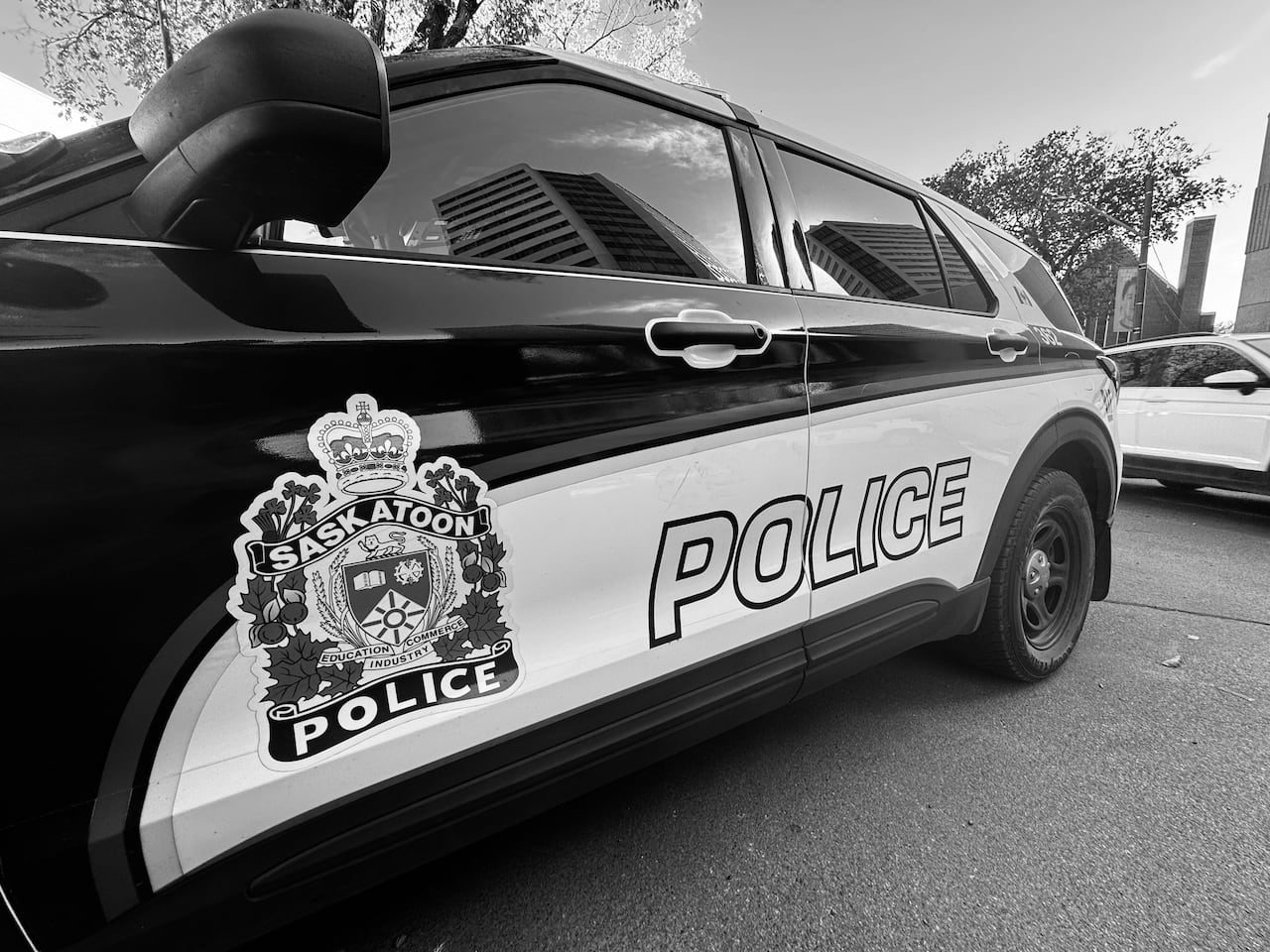
The decision that Source A was a witness, not a confidential informant, came from Staff Sgt. Corey Lenius in major crimes, Murphy said.
This contradicted the earlier police position.
By the end of October 2024, the Crown had decided that Source A was a witness and not a CI. By this measure, prosecutors had not overdisclosed when they sent the disclosure package to Murphy.
Even with the Crown’s position, Murphy said he still wanted “the blessing of the court” concerning Source A’s status before he would examine the person at trial in open court as a witness.
Danyliuk had set aside the first week of the trial for Peeteetuce and Henry to deal with the various applications by Murphy and Henry’s lawyer, Mike Buchinski.
The Crown requested an interim publication ban at the start of the trial, to protect the remaining scheduled jury trials. This meant that media could not report on what was happening in court. But reporters, the Gallaghers, friends of Peeteetuce and Henry, and the general public were free to sit in court and watch the lawyers argue.
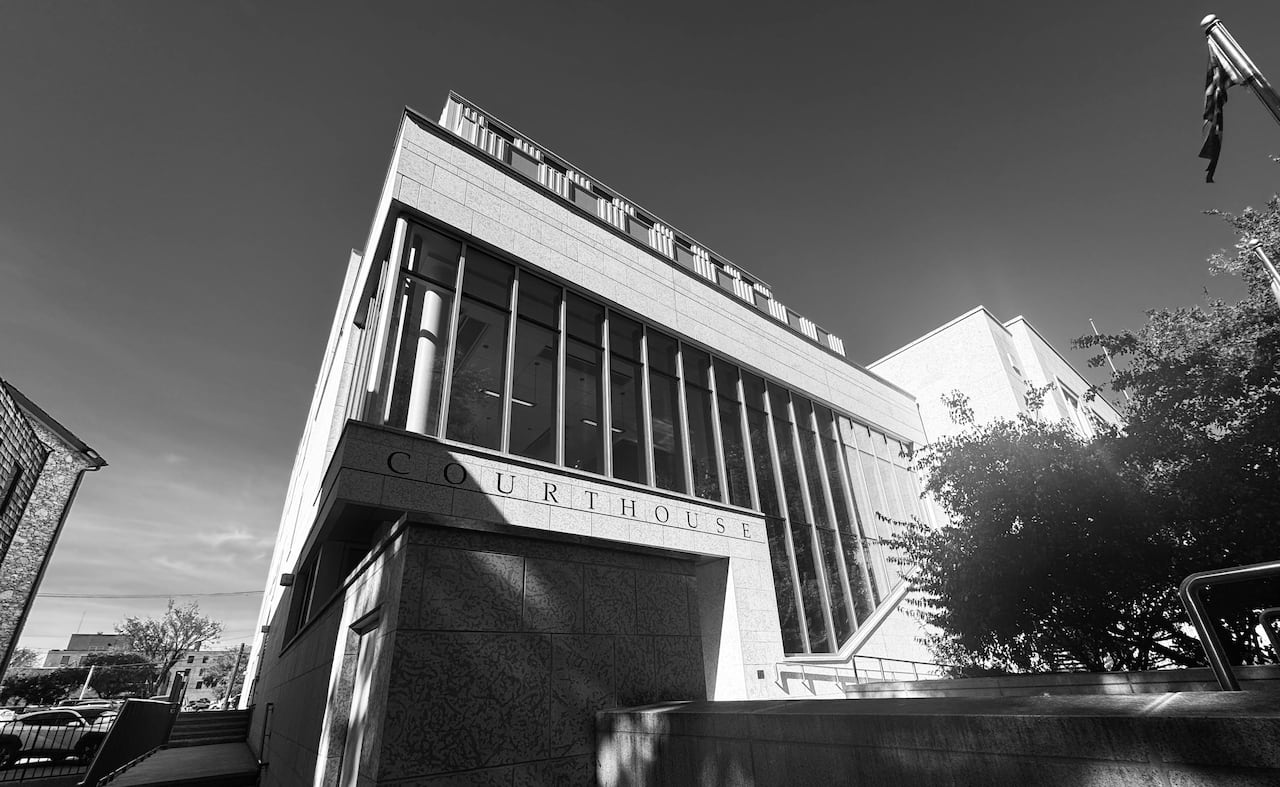
“What quickly occurred was that the name of the CI, the information relating to him or her, was discussed in open court in front of the gallery,” Murphy said.
Murphy had a date set in the second week of the trial to cross-examine Sgt. Kory Ochitwa, the officer who had originally identified Source A as a CI.
“Somehow, he swore on multiple occasions, that this person was a CI. I anticipate that he’ll have to testify that he was mistaken,” Murphy said.
This all changed after the first day of the trial.
“Monday, after court, I learn from my provincial friends that Sgt. Ochitwa’s position is going to be that [Source A] is, in his opinion, a confidential informant,” Murphy said.
“The Saskatoon Police Service’s seemingly official position is that he’s not a CI, but now we’re going to call a police officer to come in, in open court, and testify about the identity of a person that he personally believes to be a CI.”
That’s when Justice Danyliuk cleared the courtroom and went in camera with the lawyers.
“So you’ve got a senior stick at [Saskatoon Police Service] saying something’s white. And then after the fact, after his information is acted upon, after authorizations are granted based on his assertion that something is white, two months before this trial begins, defence is told, umm, nope, it’s black,” Danyliuk said.
“This is a big and very ugly can of worms that is getting opened here, it seems to me.”
On Jan. 8, prosecutor Carla Dewar said the Crown’s position was that — because his identity was disclosed to defence — Source A did not, in fact, have confidential informant status.
“If [he] has any issues, his issues lie with the Saskatoon Police Service,” Dewar said in court.
Danyliuk took a dim view of Dewar’s assessment.
“I would think [he] would have any number of issues, legal and practical,” Danyliuk said, “the practical one being if, as a result of the public nature of this trial, he gets labelled as a rat, maybe one of his issues is he’d prefer not to be shot in the head.”
The aftermath
After meeting behind closed doors, the Crown and defence struck the plea deal for Peeteetuce and Henry on Jan. 16, 2025.
This saved Saskatoon police from having to fight amongst themselves in open court about whether Source A was a witness or a confidential informant.
It stopped questions about whether police misrepresented their source of information to a judge to obtain multiple search warrants.
It also saved the Crown from having to publicly answer whether prosecutors had accidentally revealed the identity of a confidential informant to the defence.
On Feb. 6, Justice Dovell sentenced Peeteetuce and Henry to seven years in prison for their roles in killing Megan Gallagher.
“This trial was supposed to be for first-degree murder and when hearing the things that we’ve heard, this is first-degree murder,” Brian Gallagher told reporters after the sentencing hearing.
“We can’t talk about [it] because of the publication bans. But in my opinion, this was first-degree murder.”
CBC Saskatchewan and the Saskatoon StarPhoenix unsuccessfully challenged the court’s publication ban on evidence and arguments heard during Peeteetuce’s and Henry’s sentencing. Dovell ruled the ban was necessary to protect the fairness of the upcoming jury trials.
Since that ruling, the Crown stayed the manslaughter charge against Thomas Sutherland.
Roderick Sutherland’s manslaughter trial began on Oct. 6 and concluded on Friday with the jury finding him guilty.
In March, despite having entered a guilty plea to second-degree murder in the death of Megan Gallagher, Robert (Bobby) Thomas applied to the Saskatchewan Court of Appeal for a new trial.
In his notice of appeal, Thomas cited unspecified “Charter right violations,” adding that he hoped “to have one last chance of having some kind of life with my four kids. They lost their mom to an overdose in Sept. 2024, so I wanna make sure they have one parent to go to, and I feel I haven’t had a fair court case either.”
Justice Neal Caldwell heard the appeal on June 11 and released a written decision two days later.
“Bluntly, the allegations made orally by his counsel in this matter are not only wholly unsupported by any evidence, they are, at least to some extent, dispelled or contradicted by the court record,” Caldwell wrote.
Thomas suggested that he had gotten bad advice from his earlier counsel. Caldwell said Thomas’s own words at his sentencing undermined this position.
“As is evident, the contention of improper pressure from his trial counsel is inconsistent with Mr. Thomas’s own, unsolicited statement in his sentencing hearing that his first lawyer had several times attempted to arrange for Mr. Thomas to plead guilty to a lesser offence than second-degree murder.”
In the end, Chris Murphy said he can appreciate how the controversies that led to the manslaughter pleas would have hurt and frustrated Megan Gallagher’s family and friends.
“It likely would have been higher sentences if these issues hadn’t come into play,” he said.
“And I think from the perspective of the Gallagher family, that is something that would be very, very hurtful to them, knowing that potentially the sentences could have been higher had it not been for these abuse-of-process type issues.”
Saskatoon police and public prosecutions declined interview requests for this story.
“We won’t be able to accommodate your request,” Saskatoon police spokesperson Alyson Edwards wrote in an email.
“We are reviewing that file and working with our partners in prosecutions to address questions arising from it.”




